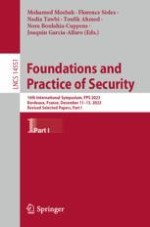2024 | OriginalPaper | Chapter
VulMAE: Graph Masked Autoencoders for Vulnerability Detection from Source and Binary Codes
Authors : Mahmoud Zamani, Saquib Irtiza, Latifur Khan, Kevin W. Hamlen
Published in: Foundations and Practice of Security
Publisher: Springer Nature Switzerland
Activate our intelligent search to find suitable subject content or patents.
Select sections of text to find matching patents with Artificial Intelligence. powered by
Select sections of text to find additional relevant content using AI-assisted search. powered by
